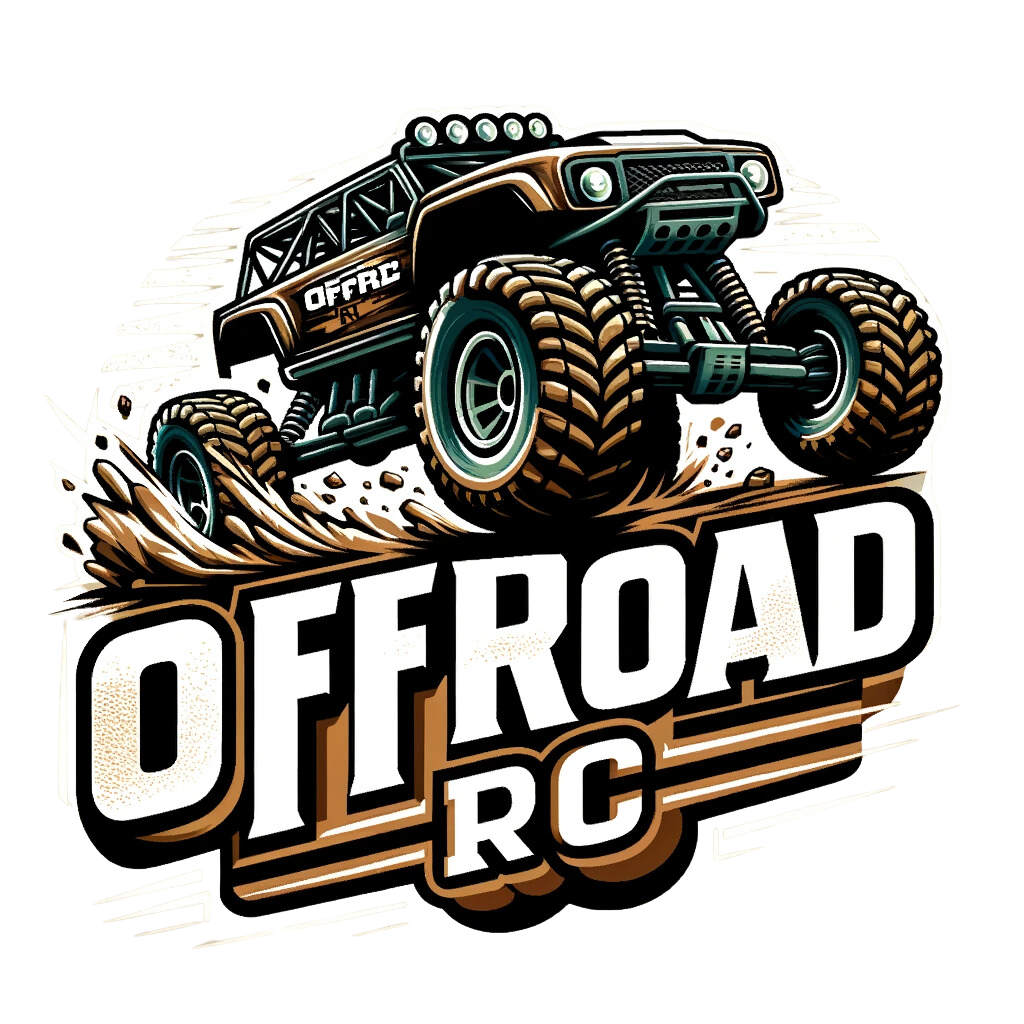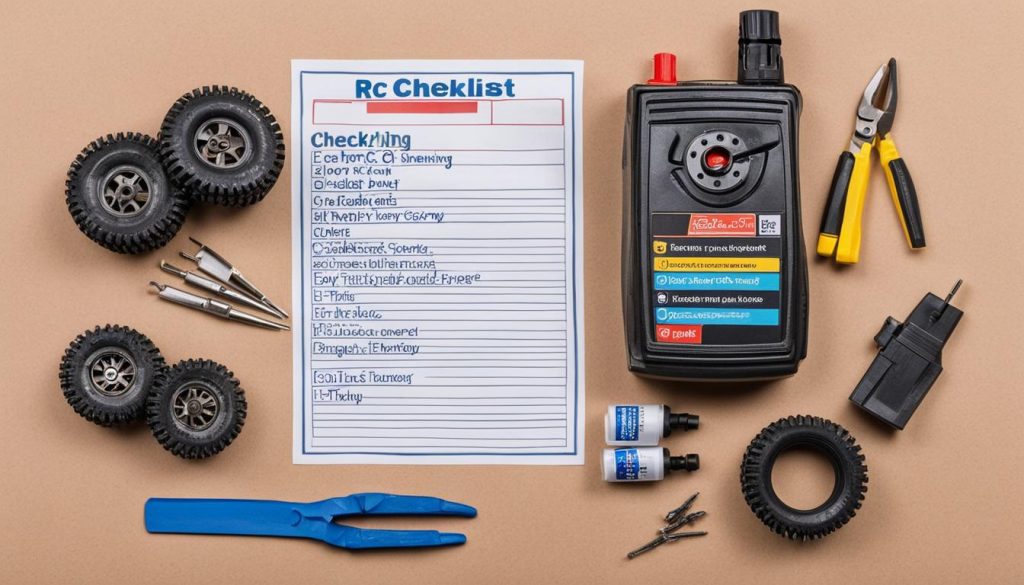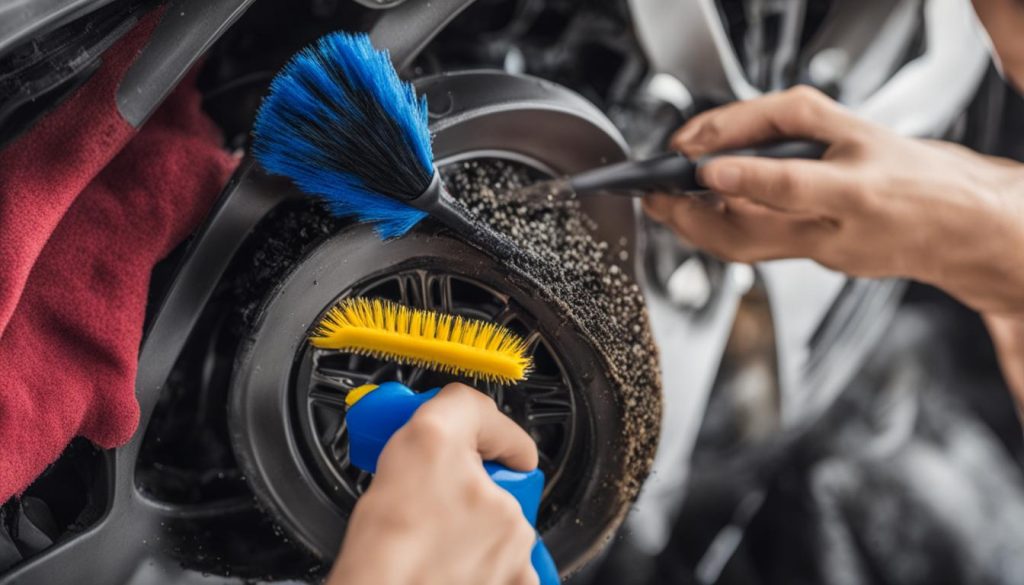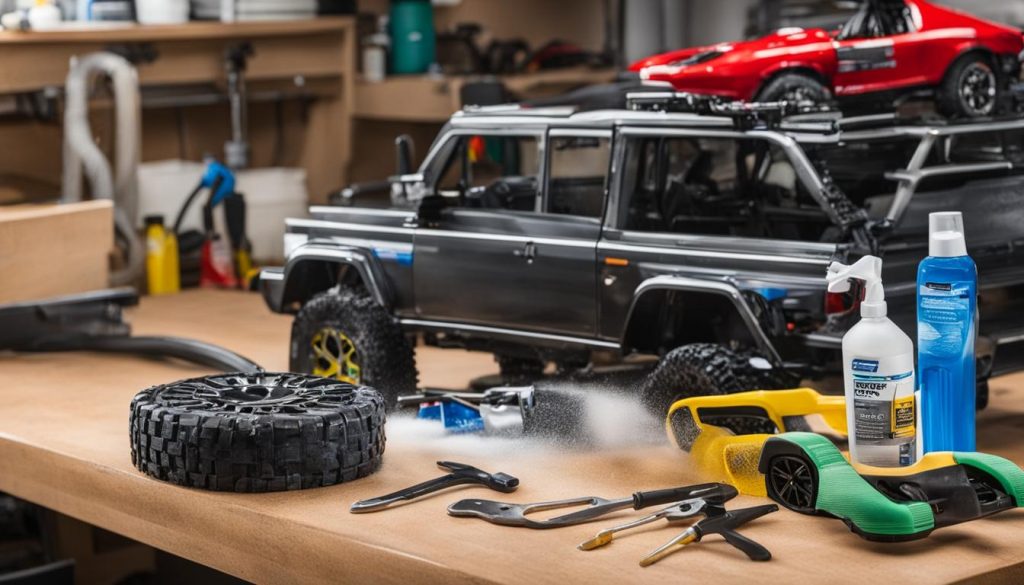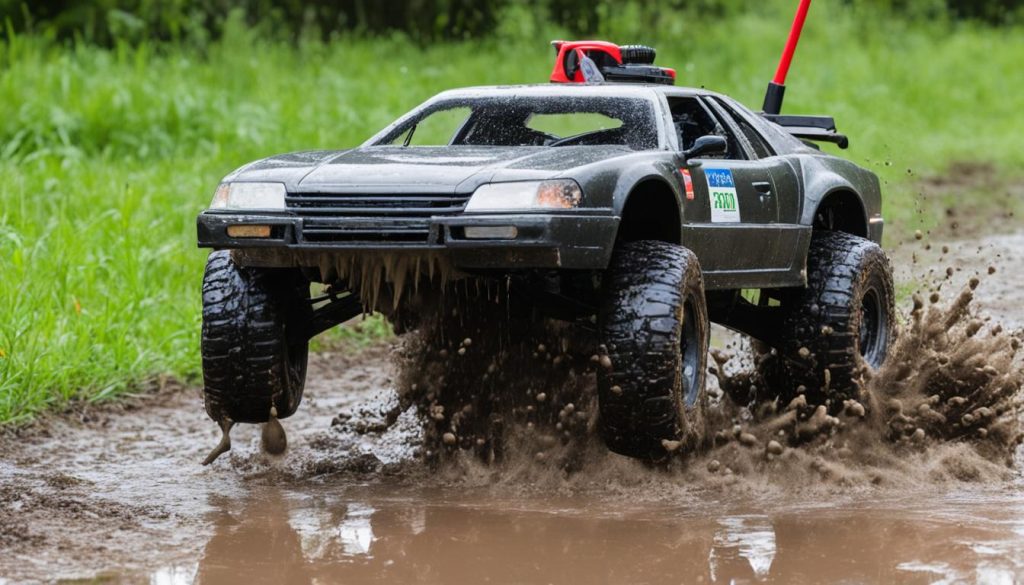RC cars, like any other machine, require regular maintenance to ensure optimal performance and longevity. Neglecting maintenance tasks can lead to costly repairs and decreased enjoyment of your RC car hobby. In this comprehensive guide, we will explore the essential maintenance tips every RC owner should know. From checking and replacing worn parts to cleaning, lubrication, and proper storage, these tips will help you keep your RC car in top condition and ready for action.
Key Takeaways:
- Regular maintenance is crucial for keeping your RC car in top condition and ensuring optimal performance.
- Check and replace worn parts to prevent performance issues and potential damage to your RC car.
- Clean your RC car after each use to remove dirt, dust, mud, and debris.
- Use proper lubrication to prevent friction and wear on moving parts.
- Check for loose parts and tighten screws and bolts to prevent mechanical failure.
Check and Replace Worn Parts
Regularly inspecting your RC car for worn parts is an essential maintenance task that will help keep it performing at its best. By inspecting and replacing worn parts, you can prevent potential damage to your RC car and ensure optimal performance. Here are some key areas you should pay attention to:
- Tires: Inspect your tires for bald spots, cracks, or significant wear. Worn-out tires can affect traction and handling.
- Belts and Gears: Examine belts and gears for any signs of damage, such as stripped teeth or wear. Damaged belts and gears can lead to performance issues and system failures.
- Shocks and Arms: Check shocks and arms for any leaks or looseness. Leaky shocks can result in poor suspension performance, while loose arms can compromise stability and control.
By regularly checking and replacing worn parts, you can maintain the overall performance and longevity of your RC car. Don’t wait until a part fails, as it could lead to further damage or more costly repairs.
Example Table: RC Car Parts Inspection
| RC Car Part | Inspection Checklist |
|---|---|
| Tires | Check for bald spots, cracks, and significant wear. Replace if necessary. |
| Belts and Gears | Examine for damage, stripped teeth, or wear. Replace if needed. |
| Shocks and Arms | Inspect for leaks or looseness. Replace or repair as required. |
Regularly inspecting and replacing worn RC car parts is a vital aspect of routine maintenance. By addressing any issues promptly, you can ensure your RC car stays in top condition and continues to provide endless hours of excitement and fun.
Clean After Each Use
After each thrilling RC car adventure, it’s important to dedicate time to cleaning your vehicle thoroughly. Removing dirt, dust, mud, and debris is essential for maintaining its performance and extending its lifespan. By following these simple cleaning steps, you can keep your RC car in pristine condition for countless future adventures.
Exterior Cleaning
Start by wiping down the exterior of your RC car using a soft microfiber cloth. This will remove any loose dirt or dust that has accumulated on the surface. Pay attention to crevices and fenders where debris may be trapped. Use a small brush to dislodge stubborn dirt and debris. For heavily soiled areas, consider using a mild soap and water solution to carefully clean the exterior. Rinse thoroughly and make sure to dry the car completely to prevent any water damage.
Interior Cleaning
While cleaning the exterior is important, it’s equally crucial to clean the internal components of your RC car. Start by removing the shell to access the critical components such as motors, electronics, gears, and drivetrain. Inspect these components for any signs of lubricant residue, metal shavings, or environmental debris. Use cotton swabs dipped in cleaning solvent to gently clean these areas. Pay close attention to delicate parts and ensure they are free from any dirt or obstructions. Finish the cleaning process by using compressed air to blow away any remaining debris, ensuring a thorough clean for the interior of your RC car.
Remember, regular cleaning after each use is key to maintaining the optimal performance and longevity of your beloved RC car.
Use Proper Lubrication
Proper lubrication is essential for maintaining the smooth operation of your RC car. Moving parts like gears, drive shafts, and bearings rely on lubricants to prevent friction and wear. To ensure optimal performance, it’s important to use lubricants specifically designed for RC cars, such as lightweight silicone-based oils and greases.
When lubricating your RC car, apply a small amount of lubricant to critical parts like axles, suspension joints, steering linkages, and drivetrain components. This will help reduce friction and protect against premature wear. Be sure to spread grease onto gears using a toothpick, taking care not to over-lubricate to prevent excess oil from spraying out at high RPMs.
By using proper lubrication techniques and products, you can prolong the lifespan of your RC car and maintain its optimal performance. Refer to the manufacturer’s guidelines or consult an RC car expert for specific recommendations on lubrication.
Benefits of Proper Lubrication
Proper lubrication offers several benefits for your RC car:
- Reduced friction: Lubricants create a protective layer that reduces friction between moving parts, allowing them to operate smoothly.
- Wear prevention: Lubricants help prevent premature wear and damage to gears, drive shafts, and bearings.
- Improved efficiency: Proper lubrication ensures that energy is efficiently transferred between different components, optimizing performance and power delivery.
- Extended lifespan: By minimizing friction and wear, proper lubrication helps increase the lifespan of your RC car’s vital components, saving you money on repairs and replacements.
| Lubrication Product | Benefits |
|---|---|
| RC Oil | – Specifically formulated for RC cars – Provides smooth and reliable performance – Reduces friction and wear |
| RC Car Lubricants | – Offers targeted lubrication for various parts of the RC car – Protects against rust and corrosion – Enhances overall performance and durability |
Proper lubrication is like giving your RC car a well-deserved spa treatment. It keeps the moving parts happy, smooth, and performing at their best. Don’t skip this essential maintenance task if you want to enjoy countless hours of high-speed excitement with your RC car.
Check for Loose Parts
The intense vibrations generated by RC cars can cause screws, bolts, and fittings to become loose over time. Regularly checking for loose parts is crucial to prevent mechanical failure.
Here is a simple RC car maintenance checklist to help you ensure that all parts are secured:
- Give your car a hard shake and visual inspection before and after each use to identify any potential loose parts.
- Gently rock the vehicle back and forth to feel for any sloppiness indicating loose hardware.
- Visually inspect suspension arms, shock towers, chassis braces, gears, pins, driveshafts, and motor mounts for signs of looseness.
- Tighten any loose screws or bolts using the appropriate size hex wrench, being careful not to over-tighten.
- If you have continuously loose parts, consider using thread-locker glue to secure them.
Properly securing loose parts is essential for maintaining the overall performance and durability of your RC car. Don’t overlook this important step in your maintenance routine, as it can prevent mechanical failure and ensure a smooth and enjoyable RC driving experience.
Remember, regular maintenance is key to keeping your RC car in top condition and avoiding unexpected issues on the track. Stay proactive and follow these maintenance guidelines to prevent mechanical failure and ensure your RC car always performs at its best.
Clean and Protect Electronics
The sensitive electronic components in your RC car, such as the receiver, servo motors, speed control, and onboard computer, need to be kept clean, dry, and protected for reliable performance. Proper maintenance of these RC car electronics is essential to prevent damage and ensure longevity.
Remove Dirt and Debris
To keep your RC car electronics in optimal condition, start by removing any dirt and debris that may have accumulated. Use compressed air to blow out dust and debris from electronic enclosures and circuit boards. This will help prevent buildup that can hinder proper functioning.
Check for Corrosion and Damage
Regularly inspect the connections and wires of your RC car’s electronic components for corrosion or damage. If you notice any corroded connections or damaged wires, clean them with a cotton swab dipped in rubbing alcohol. This will help maintain a secure and reliable electrical connection.
Protect from Water and Moisture
If your RC car gets wet, it’s crucial to take immediate action to prevent damage to the electronics. Detach the battery and dry out the electronics using compressed air. Additionally, consider applying a protective layer of dielectric grease or silicone conformal coating to exposed circuit boards. This will help protect them from dirt, water, and moisture.
Ensure Proper Cleaning and Storage
Proper cleaning and storage are essential for protecting your RC car electronics. When cleaning, be cautious not to use excessive moisture that may seep into sensitive components. Use dry methods such as compressed air and cotton swabs for cleaning. When storing your RC car, make sure it is kept in a clean, dry location away from extreme temperatures and humidity.
Check Battery Health
The rechargeable battery pack is the power source for your RC car and requires proper maintenance. Neglecting battery maintenance can result in decreased performance and a shortened lifespan for your RC car. Here are some essential tips to keep your RC car’s battery in top condition:
- Regular Inspection: Routinely examine the battery pack for any signs of damage, including cracked cases, leaking fluid, or corroded terminals. If you notice any issues, replace the battery pack immediately.
- Swell Check: For LiPo batteries, check for signs of swelling, which indicate failing lithium-ion cells. Swollen LiPo batteries should be replaced to prevent potential safety hazards.
- Use the Right Charger: Always use the charger recommended for your specific battery type. Follow the charging guidelines provided in the manual to prevent overcharging or undercharging.
- Optimal Storage: Store your batteries at room temperature and around 40% charge state. This helps maximize their longevity and prevents excessive self-discharge or capacity loss.
- Monitor Runtimes: Pay attention to any significant decrease in runtimes after a full charge. This may indicate fading batteries that need to be replaced.
- Discharge and Recharge: For NiMH batteries, it’s recommended to discharge and recharge older packs once a month. This helps maintain their capacity and overall performance.
By following these battery maintenance tips, you can ensure that your RC car’s battery pack stays healthy and delivers optimal performance throughout its lifespan.
| Battery Maintenance Tips | Benefits |
|---|---|
| Regular inspection | Prevents potential damage and safety hazards |
| Swell check for LiPo batteries | Avoids using failing batteries and ensures safety |
| Using the right charger | Prevents overcharging or undercharging, maximizing battery life |
| Optimal storage conditions | Maximizes battery longevity and minimizes self-discharge |
| Monitoring runtimes | Indicates when battery replacement is needed |
| Discharging and recharging for NiMH batteries | Maintains battery capacity and overall performance |
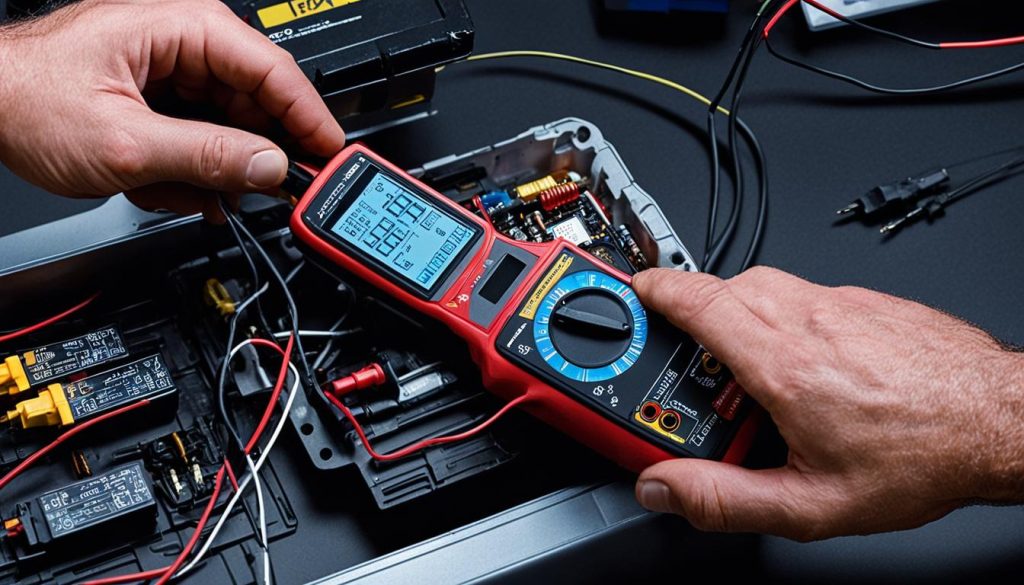
Adjust Gear Mesh
Achieving proper gear mesh is crucial for the smooth operation of your RC car’s transmission. Vibration and normal wear and tear can throw off gear alignment over time, making periodic adjustments necessary.
Consult your user manual for the manufacturer’s recommended procedure for accessing and adjusting the gear mesh. Following the specific instructions provided by the manufacturer ensures that you make the necessary adjustments correctly.
The goal is to have the pinion and spur gears just barely touching without binding when rotated by hand. This ensures that power is transferred efficiently from the motor to the wheels without any excessive strain on the gears.
If the gear mesh is too loose, there will be excessive play between the gears, leading to poor power transfer and decreased performance. On the other hand, if the gear mesh is too tight, the gears will bind and wear prematurely, potentially causing damage to the gears.
To adjust the gear mesh, you may need to loosen or tighten screws or adjust the position of the motor and gears. This process may require trial and error to achieve the optimal gear alignment. Take your time and make small adjustments until the gears mesh properly.
Properly adjusting the gear mesh ensures optimal efficiency and acceleration, preventing gear damage and prolonging the lifespan of your RC car’s transmission.
Remember: achieving the proper gear mesh is a crucial step in maintaining the performance and longevity of your RC car. Take the time to adjust the gears correctly to prevent premature wear and maximize the enjoyment of your RC car.
Balance Wheels and Tires
Out-of-balance wheels and tires can have a detrimental impact on both the handling of your RC car and the strain it puts on the drivetrain. It is essential to regularly inspect the tires for any signs of wear and tear. Additionally, take the time to spin each wheel individually to check for any wobbling, as this often indicates an imbalance.
To rectify this issue, there are a couple of techniques you can employ. One option is to attach small self-adhesive wheel weights to counterbalance the light spot on the rim. These weights are strategically placed to improve handling and absorb any excess noise and vibration. Alternatively, you can use modeling clay to achieve a similar effect.
Properly balancing the wheels and tires of your RC car is of utmost importance. Not only does it enhance the smoothness of your car’s performance, but it also reduces stress on the drivetrain. By addressing any imbalances, you can significantly improve handling and ensure optimal driving experience.
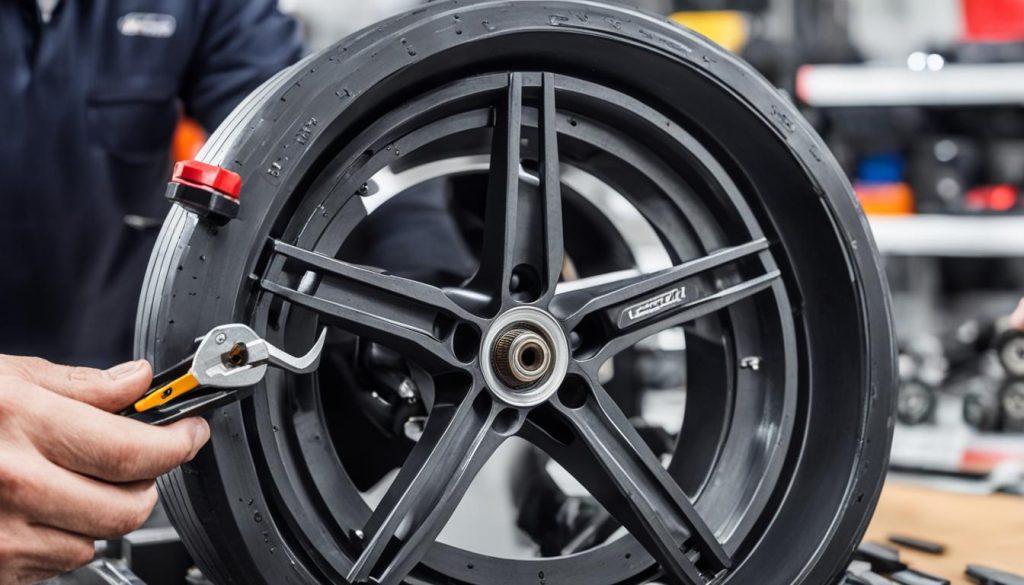
| Benefits of Wheel and Tire Balancing: |
|---|
| Improved handling: Balancing the wheels and tires reduces vibrations, enhancing the overall control and maneuverability of your RC car. |
| Reduced stress on drivetrain: Wheel and tire balance minimizes the strain on the drivetrain, leading to better longevity and performance. |
| Enhanced smoothness: Balancing eliminates vibrations, resulting in a smoother ride and increased enjoyment of your RC car. |
| Noise reduction: By addressing imbalances, you can reduce the noise produced by the wheels, leading to a quieter driving experience. |
Store Properly Between Uses
Proper storage of your RC car is crucial to ensure its longevity and maintain its performance. By following these tips, you can protect your RC car from damage and keep it in top condition for years to come.
Clean and Prepare
Before storing your RC car, it’s essential to clean it thoroughly. Remove any dirt, debris, or grime that may have accumulated during use. Use a microfiber cloth to wipe down the exterior and a small brush to remove any particles from hard-to-reach areas. Cleaning your car before storage helps prevent dirt from causing damage or corrosion over time.
Remove Batteries and Fuel
Prior to storage, remember to remove the batteries from your RC car. This helps prevent battery drainage and potential damage. If you have a nitro-powered model, drain the fuel from the tank and engine to avoid leaks and residue buildup. Properly disposing of fuel and safely removing batteries help ensure the integrity of your RC car during storage.
Choose the Right Location
Select a suitable storage location for your RC car. Ideally, choose a clean, dry, and well-ventilated space away from direct sunlight and extreme temperatures. Exposure to excessive heat or cold can affect the components and overall performance of your RC car. Storing it in an environment with controlled temperature and humidity conditions helps protect it from potential damage and deterioration.
Elevate or Remove Wheels
To prevent weight-bearing deformities, consider lifting your RC car off its wheels or removing them completely before storage. This helps maintain the shape and condition of the tires and suspension system. Additionally, rotating the tires periodically during storage can help prevent flat spots from developing.
Use a Cover or Storage Bag
To shield your RC car from dust, pollutants, and potential scratches, use a cover or storage bag. This protective layer helps maintain the exterior finish and protects delicate components. Choose a cover or bag specifically designed for RC cars to ensure a proper fit and maximum protection.
Keep Tools and Supplies Handy
It’s essential to have your tools, cleaning supplies, and spare parts readily available for efficient maintenance and repairs. By keeping these items nearby, you can quickly address any issues that may arise during storage or have them easily accessible for prepping your RC car for its next adventure.
Conclusion
Regular maintenance is crucial for keeping your RC car in top condition and ensuring optimal performance. By following these essential maintenance tips, you can extend the lifespan of your RC car and maximize your enjoyment of this exciting hobby.
Checking and replacing worn parts, cleaning and protecting electronics, using proper lubrication, and adjusting gear mesh are just a few of the tasks that should be a part of your routine maintenance checklist. Additionally, regularly cleaning your RC car after each use, checking battery health, balancing wheels and tires, and storing it properly between uses are equally important.
Investing time and effort into maintaining your RC car will not only save you from costly repairs but also allow you to keep it running smoothly for years to come. So, give your RC car the tender loving care it deserves, and get ready to experience countless hours of adrenaline-pumping fun.
FAQ
Do RC cars require maintenance?
Yes, like any other machine, RC cars need regular maintenance to ensure optimal performance and longevity.
What are some important maintenance tasks for RC cars?
Some essential maintenance tasks for RC cars include checking and replacing worn parts, cleaning after each use, using proper lubrication, checking for loose parts, cleaning and protecting electronics, checking battery health, adjusting gear mesh, balancing wheels and tires, and storing properly between uses.
How often should I check and replace worn parts in my RC car?
It is recommended to inspect your RC car for worn parts and replace them as needed. Regular inspections should be conducted before and after each use, as well as periodically to ensure optimal performance.
How should I clean my RC car after each use?
To clean your RC car, start by wiping down the exterior with a microfiber cloth to remove dust and dirt. Use a small brush to dislodge debris from crevices and fenders. Clean the internal parts using cotton swabs and cleaning solvent, and finish by using compressed air to blow away any final debris.
What type of lubricants should I use for my RC car?
It is important to use lubricants specifically designed for RC cars, such as lightweight silicone-based oils and greases. Apply a small amount of lubricant to critical parts like axles, suspension joints, steering linkages, and drivetrain components.
How can I prevent loose parts in my RC car?
Regularly check your RC car for loose parts by giving it a hard shake and visual inspection before and after each use. Tighten any loose screws or bolts using the appropriate size hex wrench, being careful not to over-tighten. Use thread-locker glue for continuously loose parts.
How should I clean and protect the electronics in my RC car?
Use compressed air to blow out dust and debris from electronic enclosures and circuit boards. Check for corroded connections or damaged wires and clean them with a cotton swab dipped in rubbing alcohol. Consider covering exposed circuit boards with dielectric grease or silicone conformal coating to protect them from dirt and water.
How can I check and maintain the health of my RC car’s battery?
Regularly examine the battery pack for signs of damage such as cracked cases, leaking fluid, or corroded terminals. Use the appropriate charger for your battery type and follow the charging guidelines provided in the manual. Storing batteries at room temperature and around 40% charge state can maximize their longevity.
What is gear mesh and why is it important?
Gear mesh refers to the alignment of the pinion and spur gears in your RC car’s transmission. Adjusting the gear mesh ensures optimal efficiency and acceleration. Improper gear mesh can lead to performance issues and premature wear on the teeth.
How can I balance the wheels and tires of my RC car?
Regularly inspect the tires for signs of wear and tear and spin each wheel to check for wobbling indicating imbalance. Use small self-adhesive wheel weights or modeling clay to counterbalance any light spots on the rims. This helps improve handling and absorb noise and vibration.
How should I store my RC car between uses?
Store your RC car in a clean, dry, and well-ventilated space away from sunlight and extreme temperatures. Thoroughly clean your car before storing to remove dirt and grime. Remove batteries and drain fuel from nitro-powered models. Consider lifting your car off its wheels or removing them to prevent weight bearing deformities. Use a cover or storage bag to protect your car from dust and pollutants.
